Additional Resource Provision (ARP)
coppetts wood arp curriculum.pdf
Intent
Ensure each learner can succeed by removing barriers to learning.
Promote respectful, kind, and safe individuals through school rules.
Offer a progress-driven curriculum focused on growth and development.
Key curriculum goals:
- Develop functional communication skills.
- Foster independence.
- Access the wider world.
- Learn self-regulation.
- Create lifelong learners.
- Broaden skills.
Equip pupils for future experiences with developmentally appropriate learning opportunities.
Incorporate multi-sensory activities to build resilience, confidence, and self-esteem.
Acknowledge and support 'spiky' learning profiles.
Use a three-stage learning model:
- Supported Learning: Adult support with visuals, Makaton, sensory breaks, and bespoke timetables.
- Modelled Learning: Observation and reduced adult interaction.
- Independent Learning: Minimal support with integration into mainstream classes.
Integrate sensory stories, bins, and visual aids for immersive experiences.
Reinforce learning with structured, brief sessions followed by positive rewards.
Monitor behavior as communication, ensuring focus and readiness to learn.
Support early number development with songs and play.
Foster early phonological awareness through sensory letter formation and visual cues.
Provide inclusion opportunities across the school and mainstream links.
Prioritize safety and welfare with high safeguarding standards.
Implementation
Tailor the curriculum to EHCP areas:
- Communication and Interaction.
- Cognition and Learning.
- Physical Development.
- Personal, Social, and Emotional Development.
Gradually balance skill development with Literacy, Mathematics, Understanding the World, and Expressive Arts.
Use termly themes for skill repetition and generalization.
Integrate B Squared, SCERTS framework, and Speech and Language reports.
Collaborate with therapists to support communication, sensory processing, and physical development.
Employ TEACCH elements and Attention Autism to build attention and listening skills.
Use visuals, AAC tools, Makaton, and the Gina Davies approach for receptive and expressive language support.
Incorporate strategies like Sensory Circuit, Zones of Regulation, sensory play, and outdoor learning.
Embed play stages and offer regular outdoor opportunities for physical development.
Broaden experiences through:
Art, yoga, music, and Forest School activities.
- Local and ARP trips, life skills like cooking, and themed weeks (e.g., Neuro Diversity Week).
- Encourage emotional regulation through sensory strategies and independent calming approaches.
- Embed Zones of Regulation to support self-regulation with visuals and sensory breaks.
Impact
Record daily observations on Tapestry and in learning books.
Hold weekly class meetings to assess and discuss pupil progress and needs.
Provide feedback to parents and carers via:
- Weekly updates.
- Daily contact through email or Tapestry Messaging Service.
- Meetings or calls as needed.
Conduct annual reviews of EHCP targets with parents and carers.
Collaborate regularly with therapists and the school nursing team to review needs and progress.
Use Connecting Steps to record progress and set new targets.
Enable holistic, child-led learning to help pupils achieve their potential while recognizing unique profiles.
Foster progress through adaptive teaching, continuous assessment, and lesson refinement.
Barney Local Offer - Additional Resource Provisions (ARPS)




